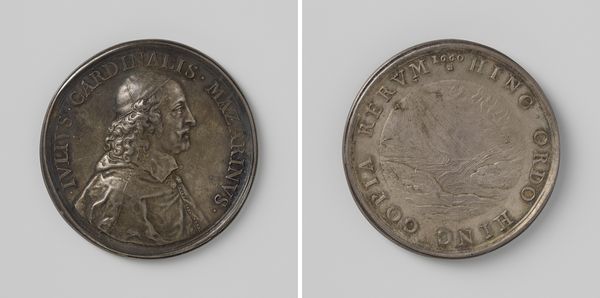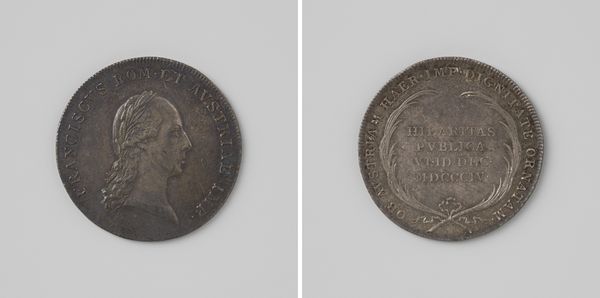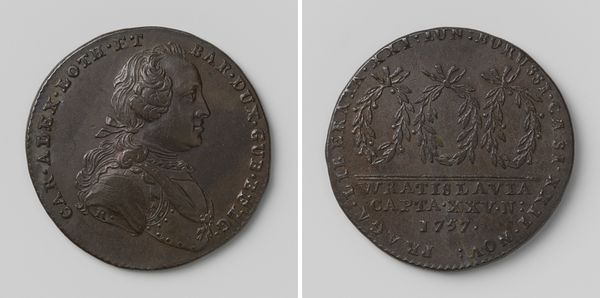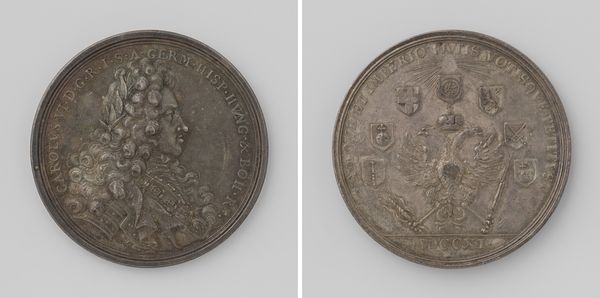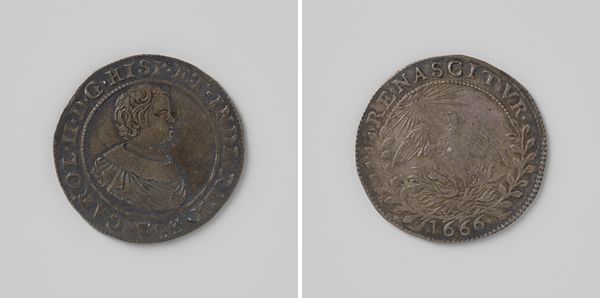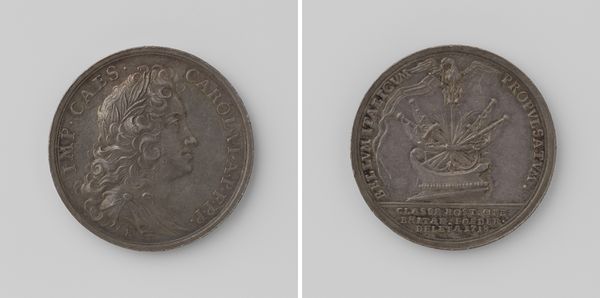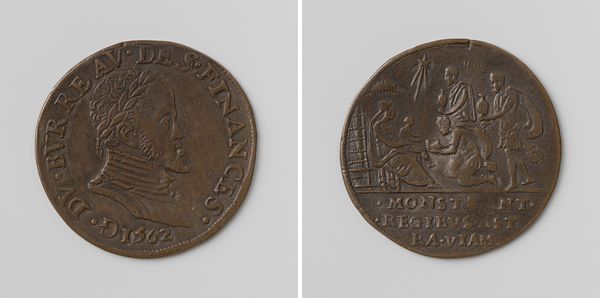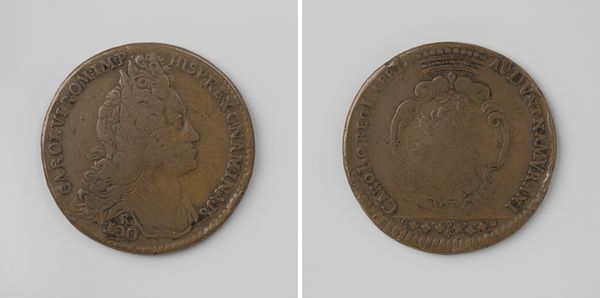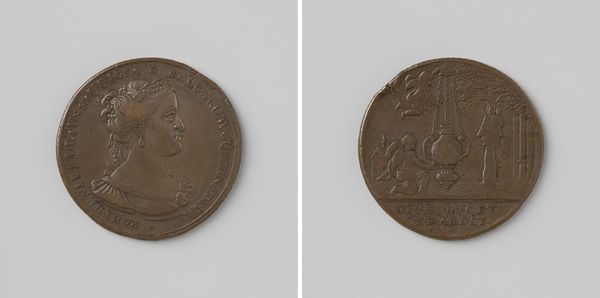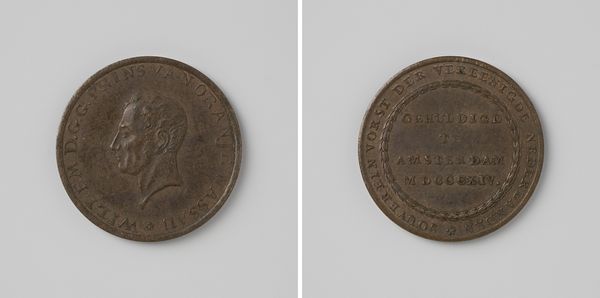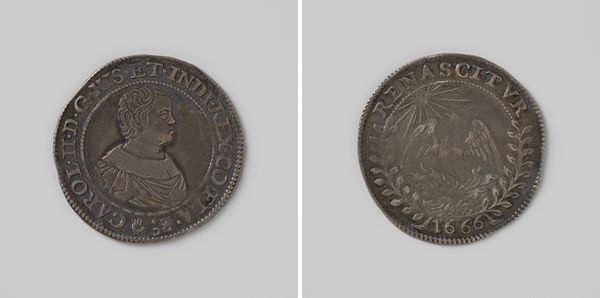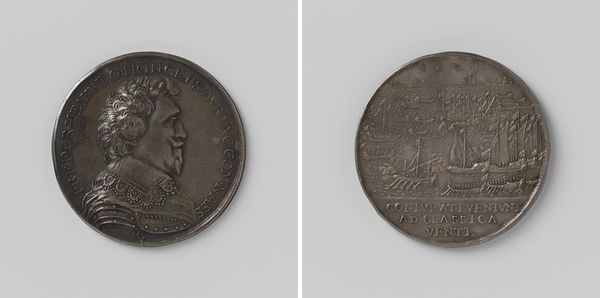
metal, bronze, sculpture
#
portrait
#
metal
#
sculpture
#
bronze
#
11_renaissance
#
sculpture
#
history-painting
Dimensions: diameter 2.9 cm, weight 4.66 gr
Copyright: Rijks Museum: Open Domain
This coin, honoring Francois-Hercule, Duke of Anjou, was made in 1583 by an anonymous maker. Likely struck from bronze, a relatively base metal, the coin feels weighty for its size. Its form would have been achieved through a combination of die-striking and hand-finishing. Coins like this were essentially propaganda, aimed at cementing the Duke's position as protector of Flanders. Look closely, and you can see the details: the Duke's profile on one side, a rearing horse on the other, both rendered with impressive detail. This level of resolution speaks to the skill of the die cutter, who would have worked in steel to create the negative impression for the coin. Consider that each coin would have been individually struck, a labor-intensive process. These weren't just pieces of currency; they were emblems of power, mass-produced yet carrying the mark of skilled handcraft. Recognizing that tension between the unique and the repeatable is key to understanding the coin's meaning.
Comments
No comments
Be the first to comment and join the conversation on the ultimate creative platform.


